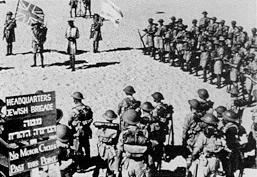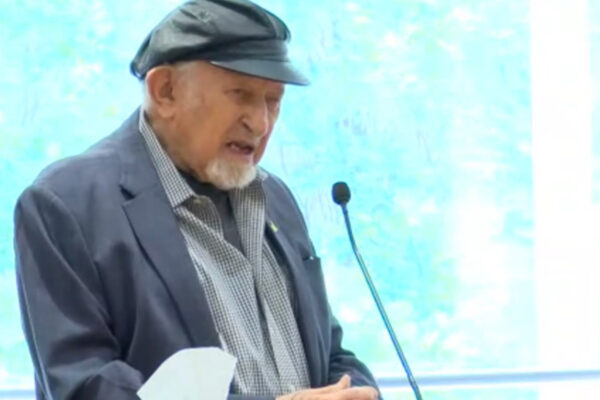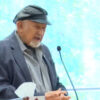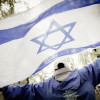JEWISH HEROISM ON DECEMBER 7, 1941, DURING THE ATTACK ON PEARL HARBOUR
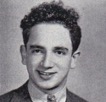
Sherman Levine, U.S. Army. Photo: Fndagrave.com
Sherman Levine, a 17-year-old student from Chicago who volunteered in the U.S. Army. Assigned to the Hawaiian division, he served as a weather observer at Hickam Air Force base on the island of Oahu. Levine and five other servicemen died when an 800-pound Japanese bomb was dropped on them from overhead. He was awarded the Purple Heart
after his death.

Louis Schleifer ★ World War II Gold Star Veteran from New Jersey. Photo: Honorstates.org
Louis Schleifer, a 21-year-old private from Newark, N.J., was also at Hickam Field, where he was attached to the 4th Reconnaissance Squadron. When he saw Japanese aircraft dropping bombs over a field, he took his 45-caliber gun and began transporting American planes into their hangars, firing at the Japanese planes at the same time. He was fatally wounded in battle wounded and awarded the Silver Star after his death.
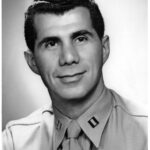
Lee Goldfarb. Photo: The Museum of the Jewish Warrior in WWII – In the Memory of Chaim Herzog
Lee Goldfarb, a 3rd Class radioman from Jersey City in N.J. When he observed seven battleships being targeted by Japanese planes at Ford Island, he rushed to his battle station. The Japanese struck Goldfarb’s ship with a torpedo and sank it, but fortunately Goldfarb survived.
Source: Tabby Refael in the Jewish Journal
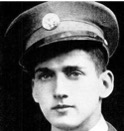
Private Jack Feldman. Photo: Findagrave.com
Private Jack Feldman, a native of Philadelphia, was assigned in 1941, to the 22nd Materiel Squadron, at Hickam Field, adjacent to the Naval Base at Pearl Harbor.
When the Japanese attacked on the morning of December 7, 1941, nearly half the 51 planes were destroyed. The hangars and the barracks and the mess hall were hit by bombs, killing many American soldiers
Jack Feldman was killed that day, one of 29 from his squadron whose lives were lost to the Japanese attack.
Newspapers reported his death as the first Philadelphian killed in the war. The Jewish community held a service on December 12th in Philadelphia conducted by Rabbi William H. Fineshriber in memory of both Feldman and Corporal Theodore J. Lewis, another Jewish Philadelphian killed in Hawaii that day.
Rabbi Fineshriber said: “They gave up their lives so that the peoples of the world might again be free. Their names will live forever in the minds of those for whom they fought.” 500 friends and family attended. They gave up their lives so that the peoples of the world might again be free. Their names will live forever in the minds of those for whom they fought. Feldman was posthumously awarded the Purple Heart in 1943.
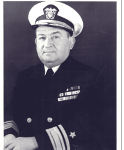
Commander Solomon Isquith’s Official Military Portrait. Photo: NMAJMH
Commander Solomon Isquith a native of Brooklyn, New York, graduated from the Naval Academy in 1920, and was assigned to the USS Utah in Pearl Harbor as an Engineering Officer. He was the senior officer aboard the ship when it was attacked on December 7, 1941.
While orders were given to abandon the ship Commander Isquith made the rounds to ensure there were no sailors still on board. Moments later the ship capsized and began to sink. But luckily, another service member outside grabbed Isquith’s arms just in time to pull him out to safety.
Once Isquith had safely reached the shore, he and the other men heard knocking sounds coming from within the sinking USS Utah. Despite the Japanese planes still targeting the area, Isquith and the others managed to cut through steel, and rescue another ten men from the ship. Overall, only 64 men lost their life on the USS Utah, and 460 were saved, including those by Commander Isquith. Commander Solomon Isquith received a Purple Heart and Navy Cross for his rescue efforts on the sinking Utah. His Navy Cross citation reads: “For distinguished service in line of his profession as Commanding Officer of the U.S.S. UTAH during the attack on the Fleet in Pearl Harbor, Territory of Hawaii, by Japanese forces on December 7, 1941. With extraordinary courage and disregard of his own safety, Lieutenant Commander Isquith directed the abandonment of the ship, when it was capsizing rapidly, in such a cool and efficient manner that approximately ninety per cent of the crew were saved.”
Source: The National Museum of American Jewish Military History
